| Umělec magazine 2005/3 >> Everyday Life | List of all editions. | ||||||||||||
|
|||||||||||||
Everyday LifeUmělec magazine 2005/301.03.2005 Natalia Filonenko | Ukraine | en cs de es |
|||||||||||||
|
Everyday Life is a title that can unite several new projects created by Ukrainian painters.
Maxim Mamsikov’s penchant is the everyday life of present-day offices and streets. Vasily Tsagolov is curious about the life of criminals, and Vladimir Kozhukhar takes an interest in the reality of hypermarkets. So, their choice to work with “slow” genres such as painting and sculpture may seem an antithesis to the rhythms of modern life and, at first sight, would not correspond with the object of their investigation–everyday city life. The process of creating traditional painting or sculpture has undergone no fundamental change for centuries; they remain handmade works. This process can only be accelerated by new technologies at the preliminary stage, when artists might use a camera and PhotoShop more than a classical painter otherwise would. These artists seek to reconcile their natural style with publicity, cinematographic, comic strip or pop-art principles. Rejecting contemporary forms of art documentation, the artists turn to established traditions of genre art, the art of representation of everyday life and reality. But their manner does not suggest authenticity. A new series of paintings by Vasily Tsagolov entitled Wandering Bullet is not a crime chronicle. Vladmir Kozhukhar’s Technomarket series and Mamsikov’s Downtown sculpture installation do not reflect present-day urban life. All the projects are imitations of social research and the works are imitations of sketches from life. Even the titles of Vasily Tsagolov’s previous works – the Soft Horrors photo series (1994), installations Bandits’ Fight (2000) and Hostages (2001) – reveal the presence of criminality and violence. The criminal material of his new series is interesting for the artist as it lies outside of the aesthetic zone and thus, in mass perception, it is as close as possible to the real evidence. He represents his paintings as documents of fictitious unrelated events. His desire to achieve maximum vividness entails overwhelming activity in paintings’ narratives and the unfinished quality of his works imparts documentary effect. Tsagolov states that pure documentaries often fail to make any impression as they aren’t generally made by movie makers. The journalist’s camera shows an inaccurate view of a corpse with wounds and blood in the wrong place and fails to get striking coverage of the criminal’s arrest. When Tsagolov works with a camera, his films and photos always suggest staging. His own production and “beautiful shots” are most important to him. This position is explained by both the particular exactingness of the artist and the personality of chosen individuals. Tsagolov uses established screen and legendary stereotypes of bandits who now probably have to perform ritual roles in “violent dramas” in reality in front of both victims and accomplices. The Wandering Bullet series (2004) features villains who do evil, though this negative act undoubtedly cannot be taken other than under the assumption that it is only a tribute to the thriller genre. And a thriller is not possible without shooting, blood, and, of course, a criminal. Eternal and modern characters, today’s criminals are real showmen. They offer up aberrant acts as a performance that is immediately broadcast by all TV channels. Mythical figures of violators of moral principles excite society. Law-abiding citizens apparently need an antipode, bold and violent who should not disappoint them. Vladimir Kozhukhar also works in the genre of figurative art. His first series–huge comics–can be considered soap operas about our image–saturated and cynical era. The artist works with prima facie ordinary objects, but he tends to confuse viewers by hiding the context, producing a powerful psychological tension in his series. More recently, conflicts have softened in his artwork, the tension abated; his manner has become colder. It seems the artist does not want to apply force in order to deceive viewers. His position has become quieter and more distant; his latest works are devoid of any didactic statements. His Technomarket series (2004) has no conflicting energy and puts forward no insoluble questions. Instead, the works transmit the emotions of a person lost in a household goods superstore whose discomfort becomes cold bewilderment. The person reminds viewers of their own wandering in endless labyrinths of the modern world. Looking into the conglomeration of things that advocate some image of life, the artist looks for a balance. He does not assert anything. He simply suggests that viewers should independently sense a minimalist game in the repetition of color and white rectangles–working TV sets, washing machines, and fridges. His imagination produces mise en scenes that may excuse senseless combinations of a huge number of the same things in one room. The actions of characters there do not seem absurd any more, but they are devoid of anything distinct and concrete. Most of them are wearing a colorful uniform. Apparently, they are the last visitors of this “consumer paradise;” they stand out from this lifeless nightmare of order. Maxim Mamsikov is an artist of moods. His works are dedicated to very different themes; the size of his canvasses is always different; his palette may vary from black and white to loud green. Since the end of the 90s, he has been interested in random, fragmented subjects. He chose the free format of a “diary” that enables easy improvisation on any random subject, using his own visual experience. Besides, the content of the diary provides for both real observations and fictitious images. A diary is the ideal form for a pseudo realistic narration filled with evident or hidden meaning or the absurd. However, his paintings are primarily aimed at researching any new potential for the medium. The subjects of his works are mostly very simple without complicated connotations. The smooth shining bodies of cars buried under fluffy snow inspired his new Snowflakes series (2005). In this series, the artist creates a feeling of incompleteness and water-color ease. He left big parts of canvas untouched as the canvas itself is white like snow or a winter sky. Social context also emerges in the series. “I am not a driver,” explains Mamsikov. “I am in a taxi going through a city covered with snow. The snow has not been cleared this year at all – it is a revolution, which means absolute freedom! We are stuck in traffic jams; I look at cars and hear the voice of a driver, ‘Look, people are selling snowflakes over there.’ In 1994, I painted a car covered with snow for the first time. The painting showed the old car run into a lamppost. Night, street, a street lamp. It very much recalls the depressive mood of those years. Today, there are more and more expensive foreign cars in Kiev. Is that good or bad? Who cares.” The artist simply recorded an object, an expensive car covered with snow that turns into an abstract form. He does not paint city landscapes but refined still lifes with very valuable objects. In the same way that Tsagolov’s work can be compared to movies, Mamsikov’s Downtown project (2004) is like a cartoon. Mamsikov is famous for his pictorial installations. He manipulates his small pictures as separate handmade elements as if assembling these readymade objects. As a result, general dynamics appear linking separate works. His Downtown also suggests a combined construction, in which quarter meter high clay figures appear as component modules. The figures of nameless participants of industrial scenes and various details of acrylic interiors that make three-dimensional pictures. Everything is as if it is broadcast through a global surveillance camera. Mamsikov explains his unexpected decision to become a sculptor by the period of instability in society, when a change of occupation is more of a norm than an exception. His objective is to reconstruct a world of new Ukrainian offices in 3D. Mise en scenes displaying one or many figures are put in separate spaces indicated by lines drawn on the ground. Not only can the artist’s own empiric observations be seen in his subjects but also an undoubted impact of cinema. His characters are basically ordinary people who are busy with their everyday lives. This is why he does not strive for exaggerated eye-catchers in contrast to Tsagolov. The project is devoid of social criticism or deliberate parody. At the same time, parody certainly resides in it, automatically appearing when even most the uninteresting scenes are converted into 3D. A comic effect inevitably emerges from the material and size of sculptures reminiscent of immature sketches and Plasticine figures. If a video or photo of a simple everyday scene runs the risk of becoming a banal advertising image, then there is no threat in Mamsikov’s carelessly modeled compositions made as a cartoon or on a Lilliputian scale. The artist considers this Plasticene method of reflection of reality adequate to his own attitude about present-day life. Today, stories can be expressed via a variety of media, but perhaps best through the cinematic reflections projected onto a screen. Indeed, the subject of reality lends itself to the use of fast running forms of reflection. But in this case each of the three artists is attracted by “archaic” genres like painting and sculpture that by their nature limit the reality experienced by the viewer. For many Ukrainian artists, realism is a convenient and habitual way to discuss outward things. Most prefer to work with motionless art forms rather than making radical gestures. Such gestures are inevitably linked to political statements. At the same time, contemporary Ukrainian artists have always expressed any protests against power by refusing to introduce any political content into their work; this is clear in the projects mentioned here. It is also difficult to deny the commonly held impression that Ukrainian figurative painting is particularly rooted in social realism. And here, each of these three artists received a traditional education that has not changed in Ukraine during the last half century. That said, these artists do not seek to narrate any authentic “true” life stories or to document any objects. Rather, they create easily recognizable abstract images of reality. For them, it is very important to overcome the limits of “realism” and to create an aesthetic simulation.
01.03.2005
Recommended articles
|
|||||||||||||
|
04.02.2020 10:17
Letošní 50. ročník Art Basel přilákal celkem 93 000 návštěvníků a sběratelů z 80 zemí světa. 290 prémiových galerií představilo umělecká díla od počátku 20. století až po současnost. Hlavní sektor přehlídky, tradičně v prvním patře výstavního prostoru, představil 232 předních galerií z celého světa nabízející umění nejvyšší kvality. Veletrh ukázal vzestupný trend prodeje prostřednictvím galerií jak soukromým sbírkám, tak i institucím. Kromě hlavního veletrhu stály za návštěvu i ty přidružené: Volta, Liste a Photo Basel, k tomu doprovodné programy a výstavy v místních institucích, které kvalitou daleko přesahují hranice města tj. Kunsthalle Basel, Kunstmuseum, Tinguely muzeum nebo Fondation Beyeler.
|







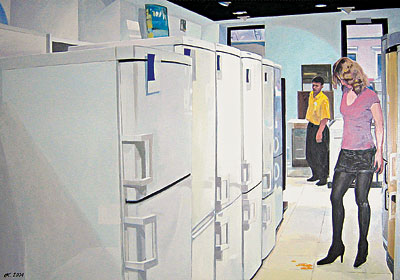
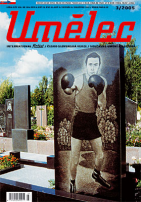















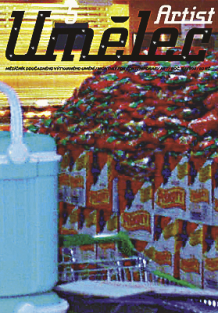




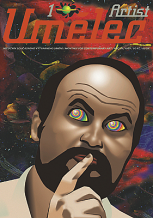
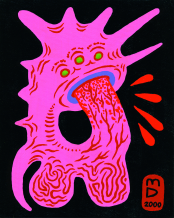
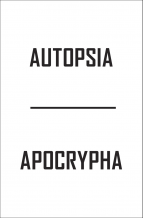



 New book by I.M.Jirous in English at our online bookshop.
New book by I.M.Jirous in English at our online bookshop.
Comments
There are currently no comments.Add new comment